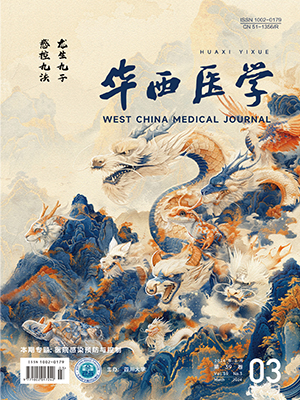| 1. |
Wu Y, Wang Y, Wang L, et al. Burden of melanoma in China, 1990-2017: findings from the 2017 global burden of disease study. Int J Cancer, 2020, 147(3): 692-701.
|
| 2. |
Lu D, Andersson TM, Fall K, et al. Clinical diagnosis of mental disorders immediately before and after cancer diagnosis: a nationwide matched cohort study in Sweden. JAMA Oncol, 2016, 2(9): 1188-1196.
|
| 3. |
Hopwood P, Stephens RJ. Depression in patients with lung cancer: prevalence and risk factors derived from quality-of-life data. J Clin Oncol, 2000, 18(4): 893-903.
|
| 4. |
McFarland DC, Shaffer KM, Tiersten A, et al. Physical symptom burden and its association with distress, anxiety, and depression in breast cancer. Psychosomatics, 2018, 59(5): 464-471.
|
| 5. |
McFarland DC, Shaffer KM, Polizzi H, et al. Associations of physical and psychologic symptom burden in patients with philadelphia chromosome-negative myeloproliferative neoplasms. Psychosomatics, 2018, 59(5): 472-480.
|
| 6. |
Koch L, Jansen L, Brenner H, et al. Fear of recurrence and disease progression in long-term (≥ 5 years) cancer survivors--a systematic review of quantitative studies. Psychooncology, 2013, 22(1): 1-11.
|
| 7. |
Hodges LJ, Humphris GM. Fear of recurrence and psychological distress in head and neck cancer patients and their carers. Psychooncology, 2009, 18(8): 841-848.
|
| 8. |
Mellon S, Kershaw TS, Northouse LL, et al. A family-based model to predict fear of recurrence for cancer survivors and their caregivers. Psychooncology, 2007, 16(3): 214-223.
|
| 9. |
Simard S, Savard J. Fear of Cancer Recurrence Inventory: development and initial validation of a multidimensional measure of fear of cancer recurrence. Support Care Cancer, 2009, 17(3): 241-251.
|
| 10. |
Park B, Kim SY, Shin JY, et al. Prevalence and predictors of anxiety and depression among family caregivers of cancer patients: a nationwide survey of patient-family caregiver dyads in Korea. Support Care Cancer, 2013, 21(10): 2799-2807.
|
| 11. |
National cancer institute. NCI dictionary of cancer terms. (2018-04-05)[2021-01-03]. https://www.cancer.gov/publications/dictionaries/cancer-terms.
|
| 12. |
Zimmermann T, Herschbach P, Wessarges M, et al. Fear of progression in partners of chronically ill patients. Behav Med, 2011, 37(3): 95-104.
|
| 13. |
Clever K, Schepper F, Pletschko T, et al. Psychometric properties of the fear of progression questionnaire for parents of children with cancer (FoP-Q-SF/PR). J Psychosom Res, 2018, 107: 7-13.
|
| 14. |
Lin CR, Chen SC, Chang JT, et al. Fear of cancer recurrence and its impacts on quality of life in family caregivers of patients with head and neck cancers. J Nurs Res, 2016, 24(3): 240-248.
|
| 15. |
吴奇云. 原发性肝癌患者及其配偶对疾病进展恐惧的现状调查及研究. 上海: 第二军医大学, 2016.
|
| 16. |
Clever K, Schepper F, Küpper L, et al. Fear of progression in parents of children with cancer: results of an online expert survey in pediatric oncology. Klin Padiatr, 2018, 230(3): 130-137.
|
| 17. |
Mehnert A, Herschbach P, Berg P, et al. Fear of progression in breast cancer patients--validation of the short form of the fear of progression questionnaire (FoP-Q-SF). Z Psychosom Med Psychother, 2006, 52(3): 274-288.
|
| 18. |
吴奇云, 叶志霞, 李丽, 等. 癌症患者恐惧疾病进展简化量表的汉化及信效度分析. 中华护理杂志, 2015, 50(12): 1515-1519.
|
| 19. |
Mahendran R, Liu J, Kuparasundram S, et al. Validation of the English and simplified mandarin versions of the fear of progression questionnaire-short form in Chinese cancer survivors. BMC Psychol, 2020, 8(1): 10.
|
| 20. |
翟本瑞. 影响电子邮寄问卷回收率因素之研究. 兰州大学学报(社会科学版), 2008, 36(1): 44-59.
|




